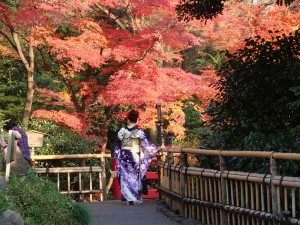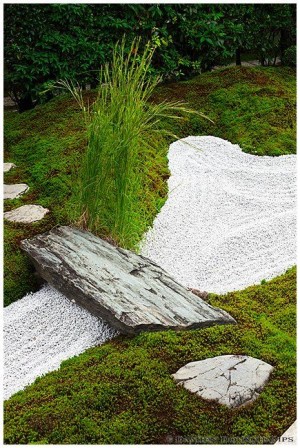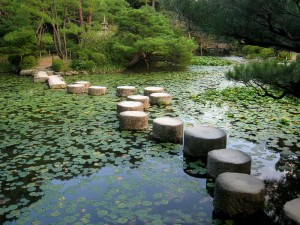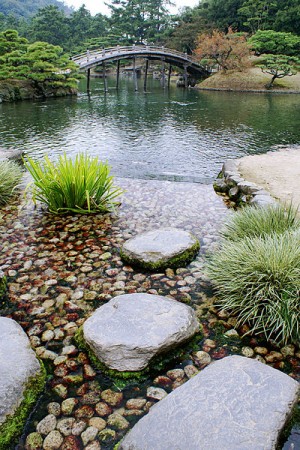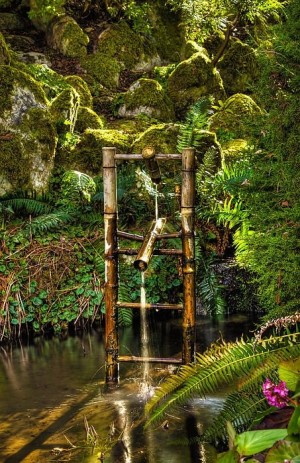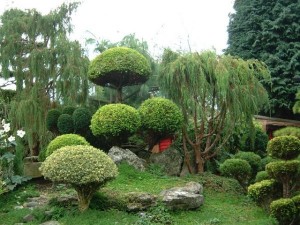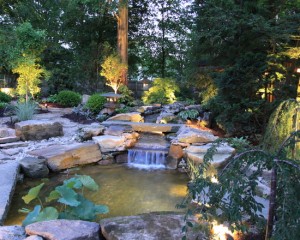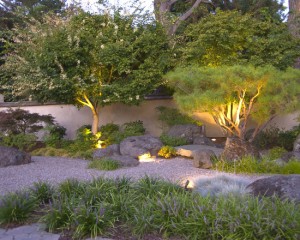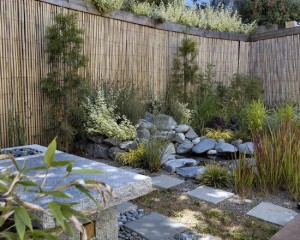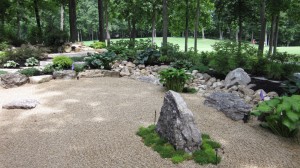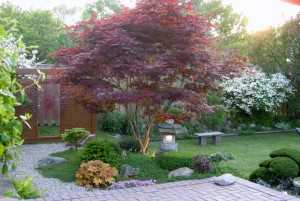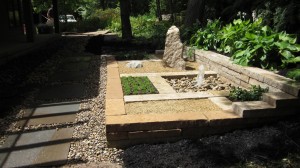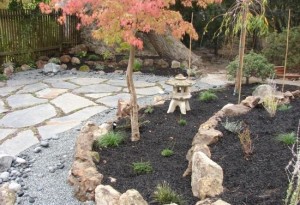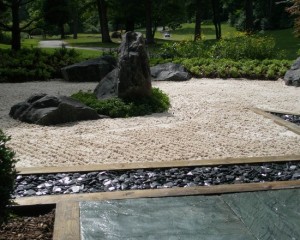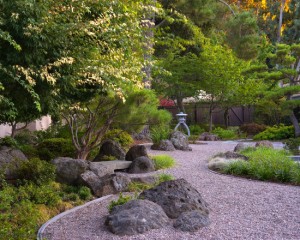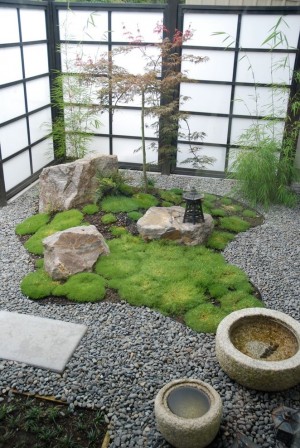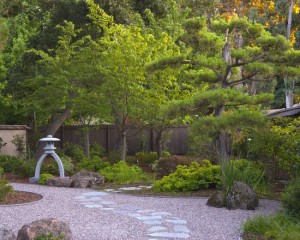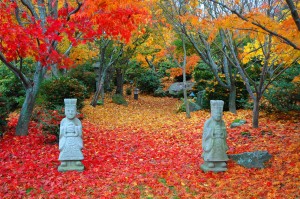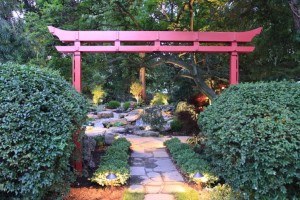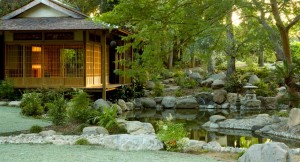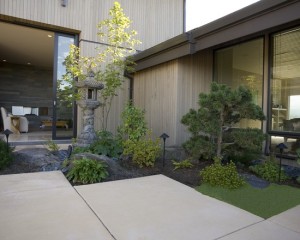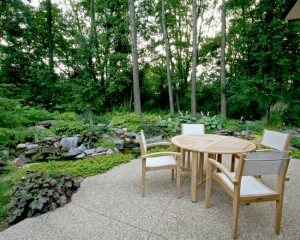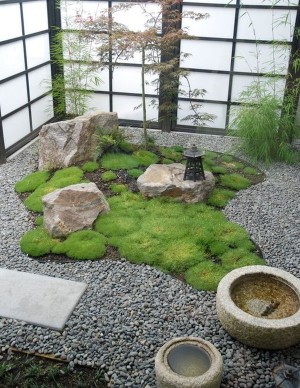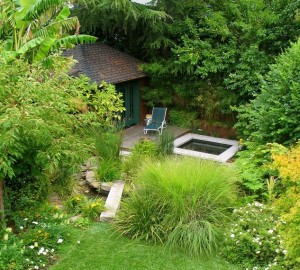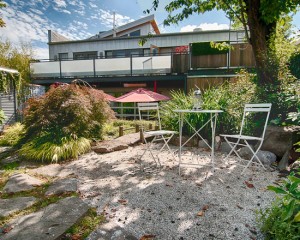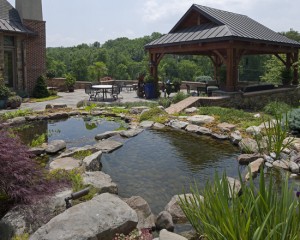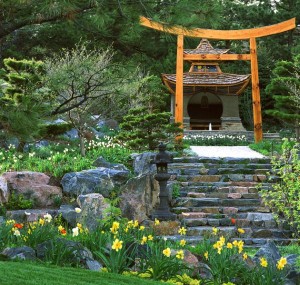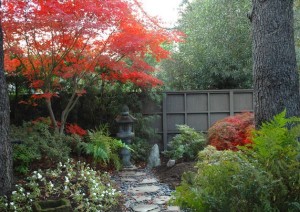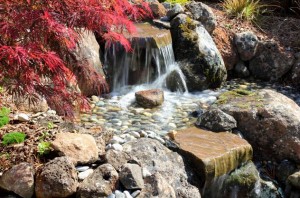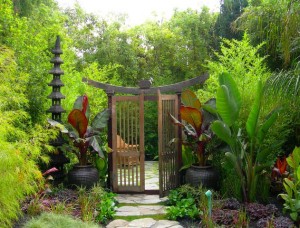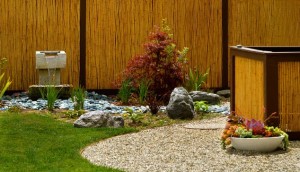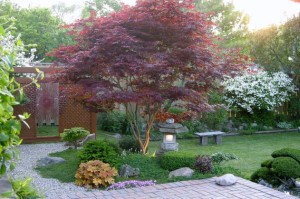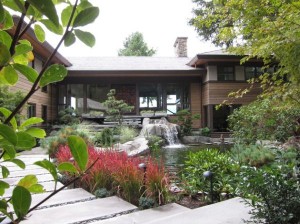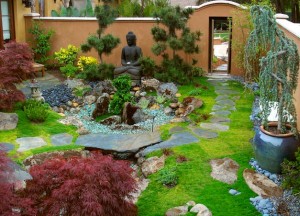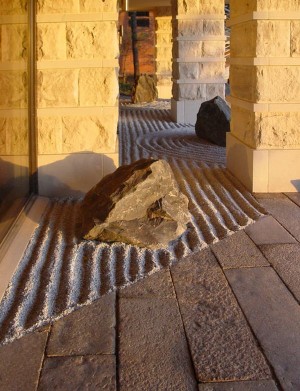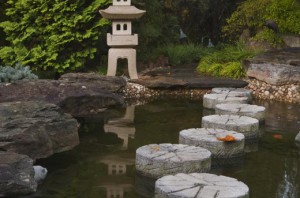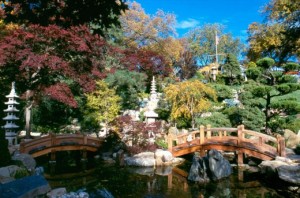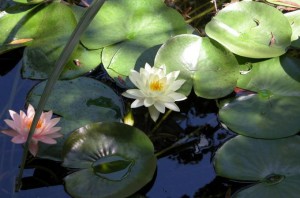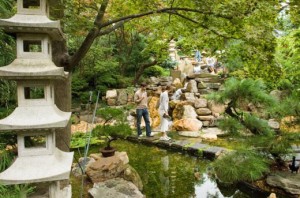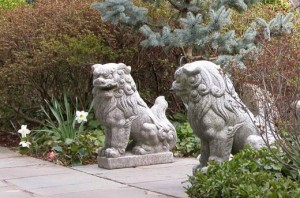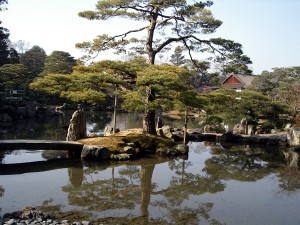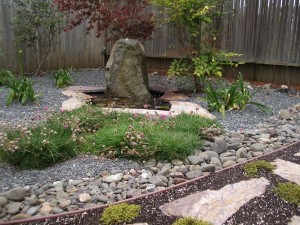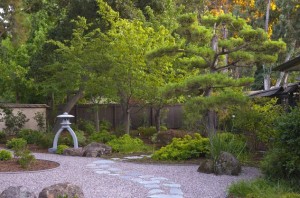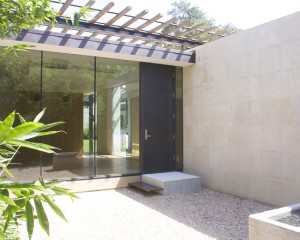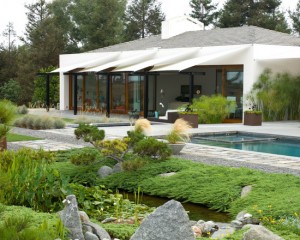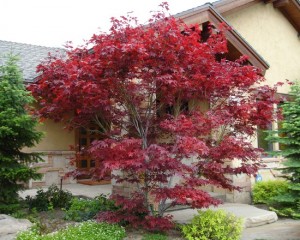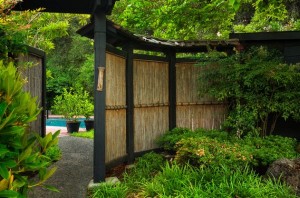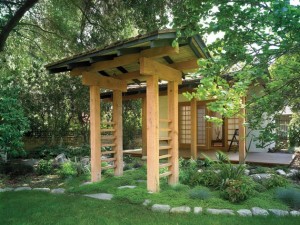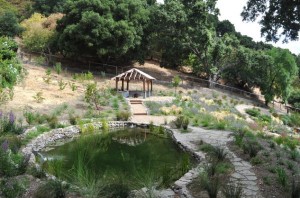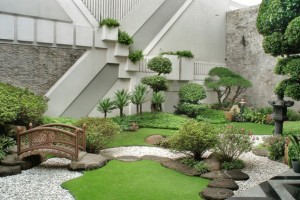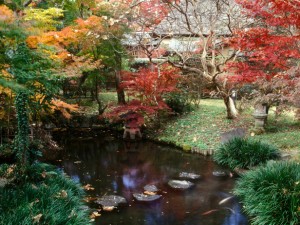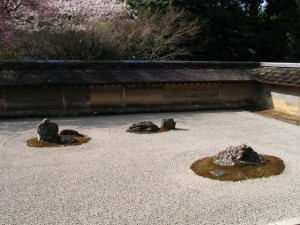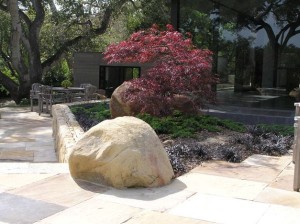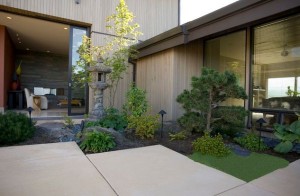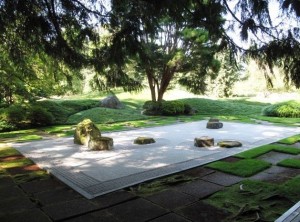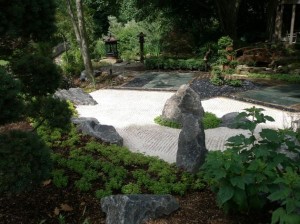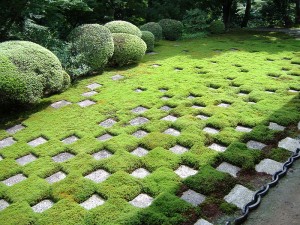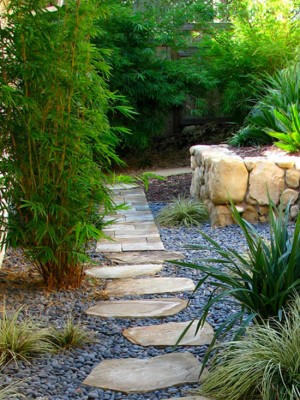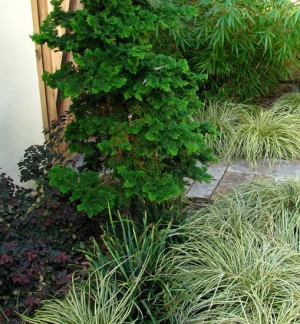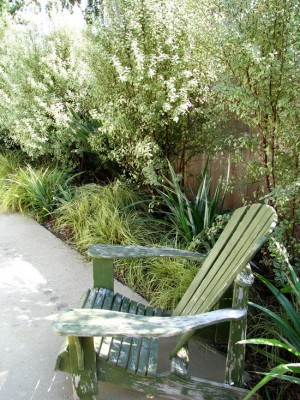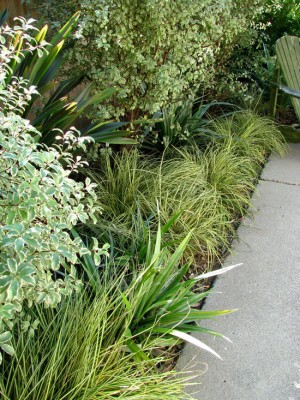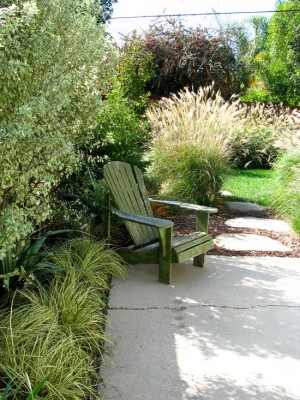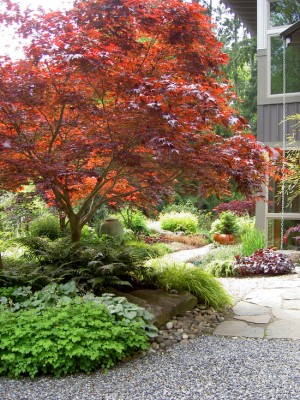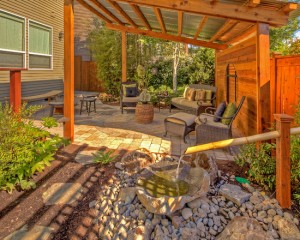Japan is a country with unusual traditions and original culture. One can talk for hours about the ceremonies and customs of this great people. Nothing is created here just like that, each creation, whether it be simple origami or ikebana, has a whole prehistory of appearance and necessarily its own philosophy of execution. A person is arranged in such a way that everything unusual attracts his attention, so Japanese motifs quickly and firmly settled in American and European interiors. And if the internal delights are not always available for viewing, then the Japanese-style garden, laid out in the open space of the estate, will not let you pass by without looking at its peaceful beauty. Sometimes it is difficult to cope with the desire to push the gate, sit on a stone bench and immerse yourself in thoughts about the eternal.
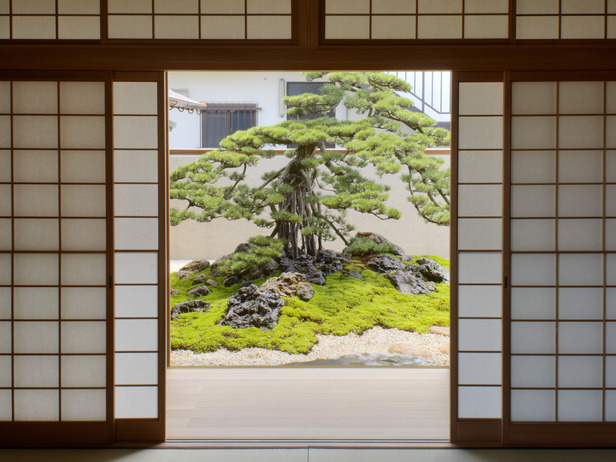
- The history of the origin of the Japanese garden
- Japanese style garden concept
- Music of the stones of the Japanese garden
- The life-giving energy of water
- Plants for the Japanese garden
- Decorative romance of the garden
- Bridges in Japanese philosophy
- Relief variety of Japanese gardens
- Features of landscape lighting
- Conclusion
- Photo gallery - Japanese-style garden:
-
Video:
The history of the origin of the Japanese garden
The formation of the style of the Japanese garden began in the distant X-XI centuries and lasted almost five hundred years. During this period, certain canons were developed, which landscape designers certainly adhere to today. Since Japan is located in a difficult climatic zone and has a difficult terrain, the gardens turned out to be very unusual. The fact is that their basis is not trees at all, as many imagine, but ... stones. Plants, on the other hand, were added to its territory in minimal quantities, or they were completely dispensed with. Japanese-style gardens in front of the Mikado Palace and in the ancient monasteries of the country can be called a real work of art.. In their space one can feel the breath of epochs. When the Europeans were first lucky enough to see these unusual creations, they really wanted to recreate something similar in their homeland. For this, Japanese masters were initially ordered and spared no expense for the delivery of original materials. Today, such landscapes are no longer a curiosity and can only cause genuine delight with the originality of execution.

Japanese style garden concept
The main feature of the Japanese garden style is the deep inner harmony generated by unity with nature. When creating such a landscape, one should not strive for symmetry, because it serves as a sign of unnaturalness and demonstrates the impact on human nature. The main elements used in the design are:
- Stones.
- Water.
- Plants.

When laying out a garden, it is very important to observe the harmony of the elements. Japanese craftsmen consider stones to be the skeleton of the garden, and water to be its blood. They prefer to give the composition a complete look, widely using secondary elements, in the list of which:
- Bamboo fences.
- Bridges.
- Arbors.
- Lanterns.
- Gates.
- Bells.
These small architectural forms often play the role of highlights and bring real comfort to the overall atmosphere.Under the conditions of our climate, it is rational to saturate the landscape with a large number of plants characteristic of a particular natural zone, because Asian exotics simply do not survive in the temperate zone. When creating reservoirs, they tend to avoid making them the correct shape. Their outlines always have smooth and, most importantly, natural curves. Only in this case they will be able to convey the energy of tranquility and peace. Fanciful fountains in a Japanese-style garden should be replaced with small waterfalls, but if there is an irresistible desire to decorate it with a fountain, then by no means pretentious, otherwise the idyll of naturalness will be violated. In gardens of a modest area, large elements in the form of boulders, immense trees and massive benches are not used. Will not tolerate such a design and a riot of colors. In the Japanese style, green color prevails, and the rest of the spectrum can be present only in the form of small dotted inclusions in a minimal amount.
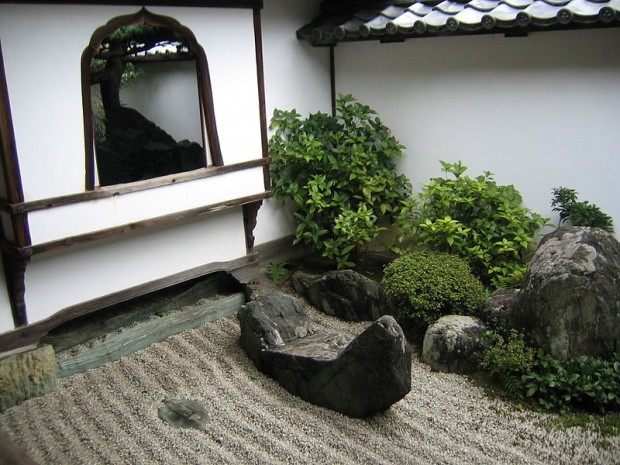
Music of the stones of the Japanese garden
In the traditional interpretation, the stones are laid out diagonally, starting from the left corner of the allocated area.
The Japanese garden is often called the Rock Garden because it is these natural elements that form its structure and remind people of strength and resilience. Composing them into a composition is not an easy art. In the traditional interpretation, the stones are laid out diagonally, starting from the left corner of the allocated area. The number of stones used must be odd. The composition certainly uses raw stones of various shades. Over the years, they will become overgrown with moss and merge even more harmoniously with the natural landscape. It is customary to plant plants around the stones. A Japanese-style garden composition may contain groups of stones, where boulders are laid out mixed with small elements. Sculptures made of polished and painted stone in a calm color will fit well into the structure of the garden. But, perhaps, the most favorite part of such a garden will be the winding paths of assorted stones, because walking along them is an indescribable pleasure.
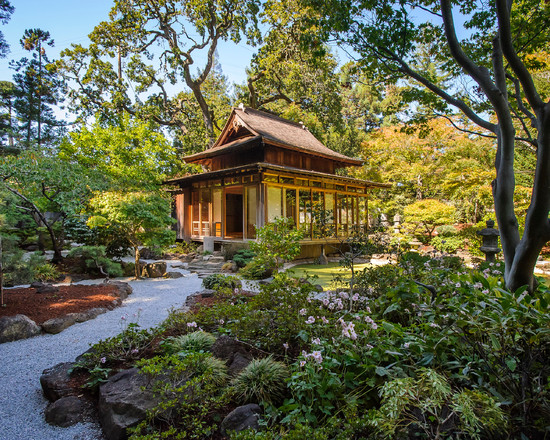
The life-giving energy of water
It is impossible to set up a Japanese garden without such an attribute as water. Only fountains and ponds, waterfalls and streams can fill the space with movement and volume. A bridge is certainly erected over the water surface. Do not be discouraged if the conditions do not allow you to equip even the simplest alpine hill. The absence of a lake will perfectly replace a dry stream. Its formed channel is laid out with smooth pebbles with glitter or gravel, and if the accents are correctly distributed, a real feeling of the presence of water is created. Water-loving plants planted along the banks will help to give greater naturalness to the landscape.
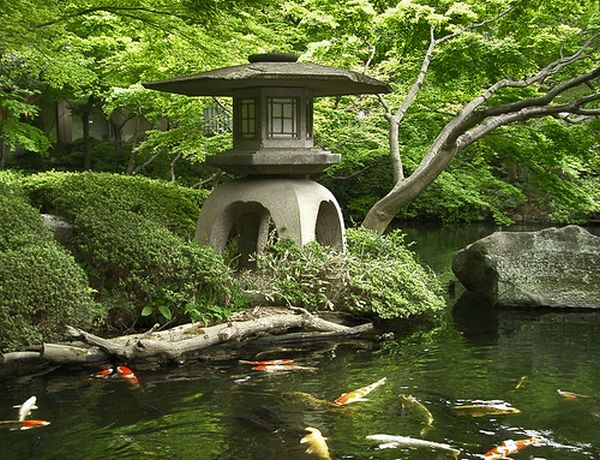
Plants for the Japanese garden
A selection of plants for a Japanese-style garden is performed according to the principle of a wave. This means that in any season in such a landscape there should be something to admire. In the warm season, one flowering group of plants should immediately be replaced by a new flowering site. Since the essence of the Japanese garden is to recreate the world in miniature, its landscape cannot do without undersized plants like juniper, rhododendron, dwarf firs, Karelian birch. They are combined with powerful giants - elms, oaks, pines. You can saturate the space with fruit trees, which will give incredible aesthetic pleasure at the time of flowering. Apricots, cherries, plums are quite capable of replacing Japanese sakura with the beauty of their flowers. As for herbaceous plants, large-leaved species will look more advantageous in a Japanese garden. It can be:
- Fern.
- host.
- Rogersia.
- Chrysanthemums.
You can not ignore the traditional Asian bamboo and bonsai. Moreover, the latter can be entered into the design right in the pots.
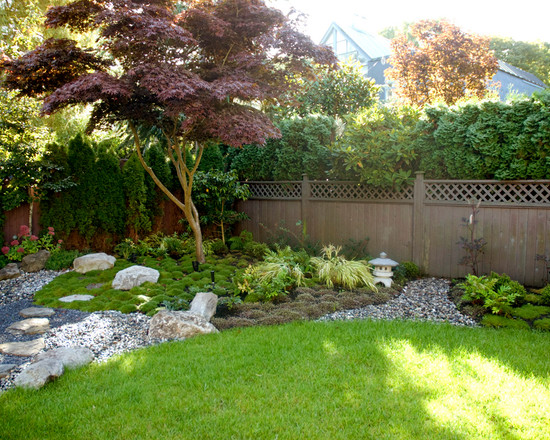
Decorative romance of the garden
The best decorative elements of a Japanese-style garden are stone sculptures and miniature pagodas made of stone or wood.. Along the alleys you can put low lanterns and neat stone benches. Hang iridescent bells on the trees, perfectly repeating the song of the wind and bringing peace. The main thing is not to overdo it with man-made materials, otherwise the garden will lose its semantic meaning.
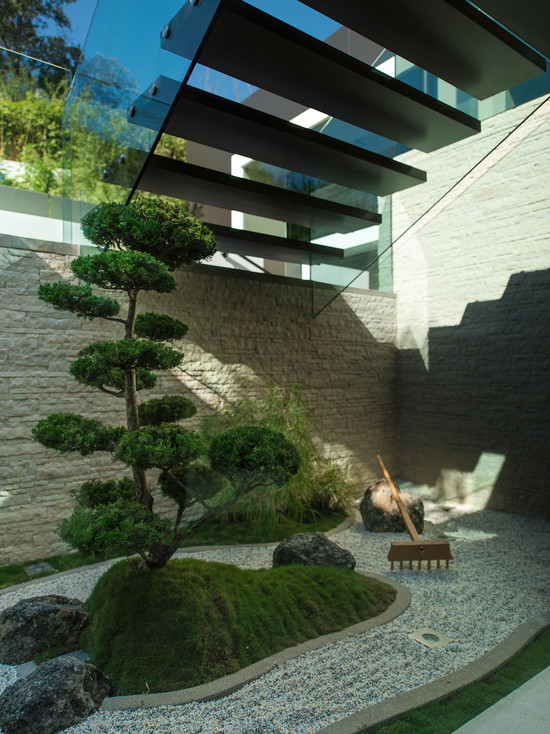
Bridges in Japanese philosophy
For most of us, a bridge is a structure designed to move over an obstacle. In gardens created in the Japanese style, this is only a decorative element that carries a semantic load. In this landscape, bridges symbolize the path of life. As usual, they are made of valuable wood, which is distinguished by the brightness of its color. Such bridges can be decorated with stones, randomly spreading them along a curved path. A path of small, oblong-shaped stones leading to the bridge will make his presence even more organic. On the sides of such an alley, it is advisable to break numerous small flower beds. Standing on such a bridge, it is impossible to refrain from thinking about the meaning of life.
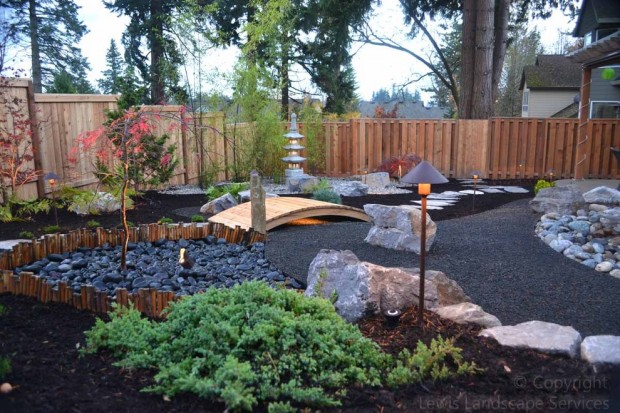
Relief variety of Japanese gardens
Equipping spacious areas for the samurai philosophy is not a problem. There is where to roam. But is it really possible to carry out a modern design of a summer cottage in this style? Quite! Professional designers can lay out a modest Japanese-style garden in a flat and hilly way. The creation of planar compositions will require sand, small stones and moss. The garden of Reanlsey is made in this way. The raked sand symbolizes the sea waves and the vast water area, along the perimeter of which moss is randomly spread out and stones are randomly scattered. In hilly terrain, greenery can be omitted. Mountains, sand, pebbles and structural stones will help create a good landscape - the main thing here is to arrange everything correctly. An elongated boulder with a vertical installation will symbolize a mountain peak, and flat cobblestones paved around - its slopes. Pebbles and sand are used to reproduce the illusion of the presence of a body of water.
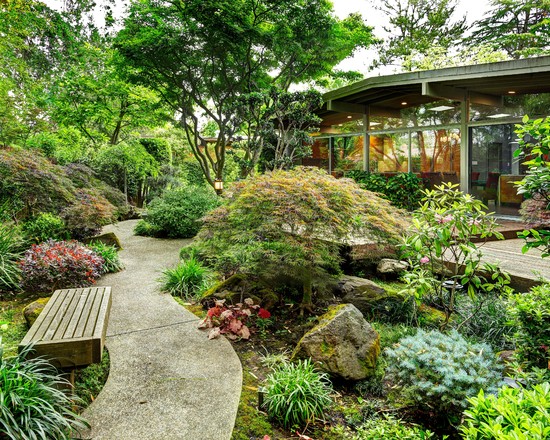
Features of landscape lighting
You can understand the essence of the art of creating a Japanese-style garden only by immersing yourself in its atmosphere.
A Japanese-style garden will never be complete without thoughtful lighting. In large gardens, tachi-gata will certainly be used. These lanterns are from one and a half to three meters high and can illuminate large areas. Near the tsukubai, you can often find hidden-type lanterns - ikekomi-gata. Their light is directed downwards, which allows you to maintain an atmosphere of twilight and mystery. Ponds are marked with tiny oki-gata, and yakimi-gata can be placed near other bodies of water.
You can understand the essence of the art of creating a Japanese-style garden only by immersing yourself in its atmosphere. In Russia, this can be done in the Main Botanical Garden. A corner of Japan here was reproduced in 1987, listed as a kind of tea garden, and has a special atmosphere that is nice to plunge into in any season. Walking along it, a person spiritually prepares for the tea ceremony.
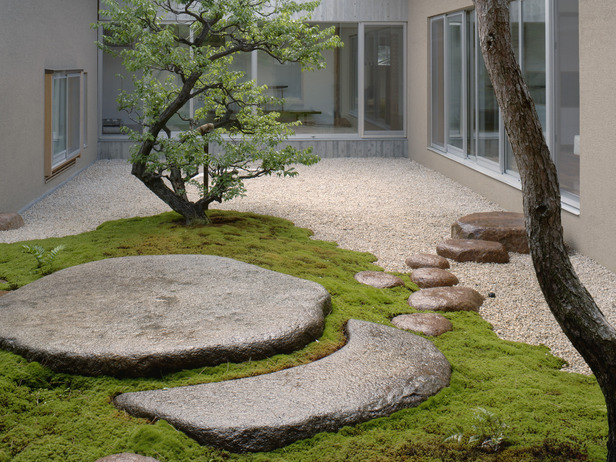
Japanese style garden
Conclusion
The process of creating a Japanese garden, although notable for its considerable complexity, is still incredibly exciting. It is clear that our conditions do not allow us to recreate an ideal garden in the Japanese style, reflecting all national canons, but you can try to get closer to the original. If you have a goal and time, then you may well be able to express your worldview in stone and water, as well as show the whole depth of the Slavic soul. When laying out the stones, listen to your heart, and then the corner of the Land of the Rising Sun will become not only a real decoration of your site, but also a great place to relax.
back to index ↑Photo gallery - Japanese-style garden:
Video:
